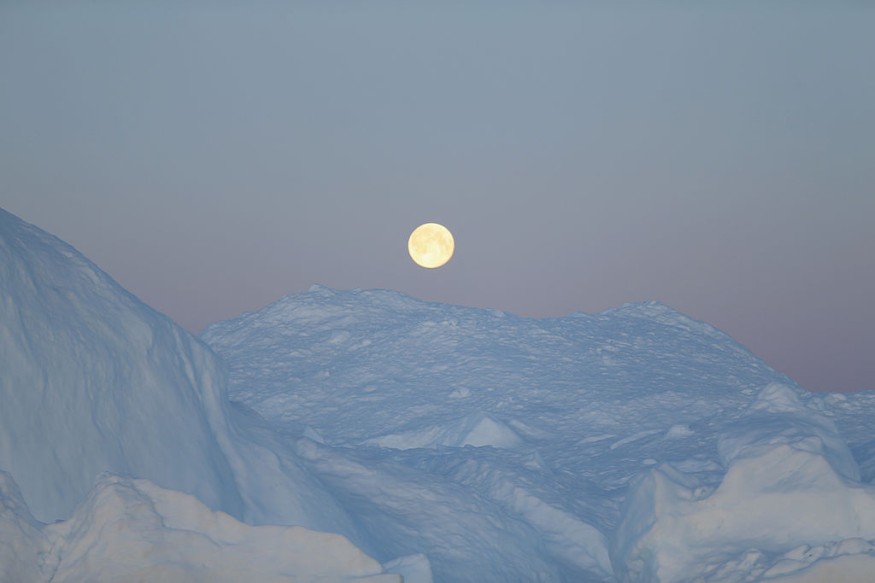
Permanently shadowed places at the poles of the Moon have a tale to share. Not only were sun-shy polar ice patches able to provide an overview of lunar history, but they also offered astrobiological information about the origin of life.
Based on cratering statistics, the polar craters' shadowed floors are usually from 3.4 and 3.9 billion years old.
The NASA Artemis program eyes the first woman and the next man to walk on the Moon by 2024. By the end of the decade, the organization also plans to develop sustainable exploration there, a mission that could involve a base camp near Shackleton Crater at the south pole of the Moon.
Such aggressive exploration attempts may depend, at least in part, on water ice removed from polar craters. And that begs a question: will this valuable resource be utilized by humankind without undermining the poles' technological ability?
Interim Directive
NASA released an interim directive last year entitled "Planetary Protection Categorization for Robotic and Crewed Missions to the Earth's Moon."
The paper describes NASA's application under the Outer Space Treaty of the United Nations, which entered into force in 1967, of its commitments to deter harmful pollution.
Specifically, the current Directive deals with the supervision of terrestrial biological pollution connected with space ships expected to land, orbit, migrate, or otherwise meet the Planet's closest celestial neighbor.
The paper splits the lunar surface into two classifications. Much of the Moon is known as "Category I," which needs limited planetary defense measures. But, like the Apollo landing sites and other legendary locations, permanently shaded polar areas that shelter water ice are known as the somewhat more conservative "Category II."
In the analysis of the past of the solar system, the related permanently shaded regions 'have empirical significance and[are] of great importance relative to the mechanism of chemical evolution, as well as possible value for In-Situ Resource Use (ISRU),' notes the Directive.
Track Collision
According to current plans, in 2022, NASA will submit two robotic landers to the South Pole, preceded in 2023 by a bigger robotic rover named VIPER. It will sink its one-meter-long-drill to dig for ice in the lunar dirt. Human beings will return early the next year and continue discovering ice craters. A NASA report published last month said one of their targets could be to gather ice and fly it, already frozen, back to laboratories on Earth for research.
The risk of explorers polluting lunar ice is an issue that no one expected five decades ago, when the first people to land on the Moon's surface were Apollo astronauts. Researchers believed at the moment that the Moon was bone dry. They have learned only in the past decade or so that there is water in certain areas, like frozen in dark polar craters. Scientists even discovered water embedded in minerals in the normally dry dirt in at least one sunlit spot on the Moon.
By way of water-rich asteroids or comets, or by a solar wind bombarding the floor, all this water may have landed on the Earth. Any of it could have originated from within the Earth, spewed out from a water-rich core in volcanic eruptions. The Moon's water retains essential scientific knowledge independent of its source.
Pollution Station
Many researchers are skeptical regarding how to explore it due to Moon's ice's relevance. In particular, the probable polluting effects of rocket exhaust on frozen caches have been studied by others.
Hundreds of planetary scientists were questioned by COSPAR, the multinational community, how much they worried about lunar exploration possibly conflicting with research at the poles. According to experts, more than 70 percent who replied to a 2020 survey said they were worried that pollution could compromise the scientific record kept within the Moon's ice.
Experts suggest what they term an 'origins-first' exploration to a shadowed crater at one of the Moon's poles in a white paper sent to NASA. Before traffic to the Moon ramps up, the aim will be to gather relatively clear ice samples to enable scientists to precisely decide how the ice there is collected over time. Such a project will inform us just how valuable the ice's scientific record is and if mining operations can be delayed, says Esther Beltran, a space scientist and co-author of the paper at the University of Central Florida in Orlando.
Decisions, rulings

However, while these debates proceed, certain scientists are not too concerned regarding concerns with pollution. Neal and others remember that rocket exhaust water vapor settles on the uppermost portion of the Moon's surface just as a thin sheet, so it wouldn't require much time to dig below it and access untouched ice below.
Several proposals were put forth by others to preserve the lunar ice. One plan is to conserve for research one of the Moon's poles, thus reopening the other for mining and discovery. Another is for any of the ice-filled craters to describe a keep-out region. Scientists claim that there are numerous such craters, from tiny pits less than a human hand to those 10 kilometers wide, and not all of them need to be investigated.
Check out more news and information on Space on Science Times.












